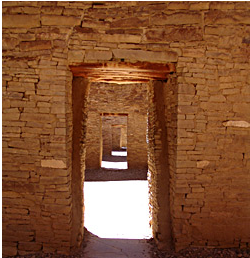Publication Date
5-1-2014
Abstract
Developmental events in the temporal bones shift the pattern of a given speech sounds acoustic profile through the time children are mapping linguistic sound systems. Before age 5 years, frequency information in vowels is differentially accessible through the years children are acquiring the sound systems of their native language(s). To model the acoustic effects caused by developing temporal bones, data collected to elicit steady-state vowels from adult native speakers of English and Diné were modified to reflect the form of children's hearing sensitivities at different ages based on patterns established in the psychoacoustic literature. It was assumed, based on the work of psychacousticians (e.g., Werner, Fay & Popper 2012; and Werner & Marean 1996), that the effects caused by immature temporal bones were conductive immaturities, and the age-sensitive filters were constructed based on psychoacoustic research into the hearing of infants and children. Data were partitioned by language, sex, and individual vowels and compared for points of similarity and difference in the way information in vowels is filtered because of the constraints imposed by the immaturity of the temporal bones. Results show that the early formant pattern becomes successively modified in a constrained pattern reflecting maturational processes. Results also suggest that children may well be switching strategies for processing vowels, using a more adult-like process after 18 months. Future research should explore if early hearing not only affects individual speech sounds but their relationships to one another in the vowel space as well. Additionally, there is an interesting artifact in the observed gradual progression to full adult hearing which may be the effect of the foramen of Huschke contributing to the filters at 1 year and 18 months. Given that immature temporal bones reflect brain expansion and rotational birth in hominids, these results contribute to the discussion of the biological underpinnings of the evolution of language.'
Keywords
Linguistic Anthropology, Biological Anthropology, Biology and Language, Child Language Development
Project Sponsors
UNM GPSA
Document Type
Dissertation
Language
English
Degree Name
Anthropology
Level of Degree
Doctoral
Department Name
Anthropology
First Committee Member (Chair)
Hillard S. Kaplan
Second Committee Member
Larry Gorbet
Third Committee Member
Jane E. Buikstra
Fourth Committee Member
Caroline Smith
Fifth Committee Member
Sherman Wilcox
Recommended Citation
Hogan, Lisa A.. "Maturing Temporal Bones as Non-Neural Sites for Transforming the Speech Signal During Language Development." (2014). https://digitalrepository.unm.edu/anth_etds/32

